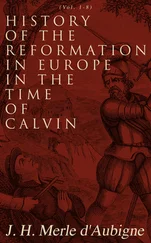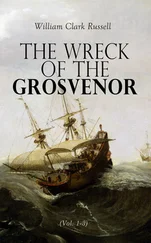William Clark - History of the Expedition under the Command of Captains Lewis and Clark, Vol. I.
Здесь есть возможность читать онлайн «William Clark - History of the Expedition under the Command of Captains Lewis and Clark, Vol. I.» — ознакомительный отрывок электронной книги совершенно бесплатно, а после прочтения отрывка купить полную версию. В некоторых случаях можно слушать аудио, скачать через торрент в формате fb2 и присутствует краткое содержание. Жанр: Путешествия и география, История, foreign_edu, foreign_antique, foreign_prose, на английском языке. Описание произведения, (предисловие) а так же отзывы посетителей доступны на портале библиотеки ЛибКат.
- Название:History of the Expedition under the Command of Captains Lewis and Clark, Vol. I.
- Автор:
- Жанр:
- Год:неизвестен
- ISBN:нет данных
- Рейтинг книги:5 / 5. Голосов: 1
-
Избранное:Добавить в избранное
- Отзывы:
-
Ваша оценка:
- 100
- 1
- 2
- 3
- 4
- 5
History of the Expedition under the Command of Captains Lewis and Clark, Vol. I.: краткое содержание, описание и аннотация
Предлагаем к чтению аннотацию, описание, краткое содержание или предисловие (зависит от того, что написал сам автор книги «History of the Expedition under the Command of Captains Lewis and Clark, Vol. I.»). Если вы не нашли необходимую информацию о книге — напишите в комментариях, мы постараемся отыскать её.
History of the Expedition under the Command of Captains Lewis and Clark, Vol. I. — читать онлайн ознакомительный отрывок
Ниже представлен текст книги, разбитый по страницам. Система сохранения места последней прочитанной страницы, позволяет с удобством читать онлайн бесплатно книгу «History of the Expedition under the Command of Captains Lewis and Clark, Vol. I.», без необходимости каждый раз заново искать на чём Вы остановились. Поставьте закладку, и сможете в любой момент перейти на страницу, на которой закончили чтение.
Интервал:
Закладка:
Beyond them on the river, and westward of the Black mountains, are the Kaninaviesch, consisting of about four hundred men. They are supposed to have emigrated originally from the Pawnees nation; but they have degenerated from the improvements of the parent tribe, and no longer live in villages, but rove through the plains.
Still further to the westward, are several tribes, who wander and hunt on the sources of the river Platte, and thence to Rock Mountain. These tribes, of which little more is known than the names and the population, are first, the Staitan, or Kite Indians, a small tribe of one hundred men. They have acquired the name of Kites, from their flying; that is, their being always on horseback; and the smallness of their numbers is to be attributed to their extreme ferocity; they are the most warlike of all the western Indians; they never yield in battle; they never spare their enemies; and the retaliation of this barbarity has almost extinguished the nation. Then come the Wetapahato, and Kiawa tribes, associated together, and amounting to two hundred men; the Castahana, of three hundred men, to which are to be added the Cataka of seventy-five men, and the Dotami. These wandering tribes, are conjectured to be the remnants of the Great Padouca nation, who occupied the country between the upper parts of the river Platte, and the river Kanzas. They were visited by Bourgemont, in 1724, and then lived on the Kanzas river. The seats, which he describes as their residence, are now occupied by the Kanzas nation; and of the Padoucas, there does not now exist even the name.
July 27. Having completed the object of our stay, we set sail, with a pleasant breeze from the N.W. The two horses swam over to the southern shore, along which we went, passing by an island, at three and a half miles, formed by a pond, fed by springs: three miles further is a large sand island, in the middle of the river; the land on the south being high, and covered with timber; that on the north, a high prairie. At ten and a half miles from our encampment, we saw and examined a curious collection of graves or mounds, on the south side of the river. Not far from a low piece of land and a pond, is a tract of about two hundred acres in circumference, which is covered with mounds of different heights, shapes, and sizes: some of sand, and some of both earth and sand; the largest being nearest the river. These mounds indicate the position of the ancient village of the Ottoes, before they retired to the protection of the Pawnees. After making fifteen miles, we encamped on the south, on the bank of a high handsome prairie, with lofty cottonwood in groves, near the river.
July 28. At one mile, this morning we reached a bluff, on the north, being the first highlands, which approach the river on that side, since we left the Nadawa. Above this, is an island and a creek, about fifteen yards wide, which, as it has no name, we called Indian Knob creek, from a number of round knobs bare of timber, on the highlands, to the north. A little below the bluff, on the north, is the spot where the Ayauway Indians formerly lived. They were a branch of the Ottoes, and emigrated from this place to the river Desmoines. At ten and three quarter miles, we encamped on the north, opposite an island, in the middle of the river. The land, generally, on the north, consists of high prairie and hills, with timber: on the south, low and covered with cottonwood. Our hunter brought to us in the evening, a Missouri Indian, whom he had found, with two others, dressing an elk; they were perfectly friendly, gave him some of the meat, and one of them agreed to accompany him to the boat. He is one of the few remaining Missouris, who live with the Ottoes: he belongs to a small party, whose camp is four miles from the river; and he says, that the body of the nation is now hunting buffaloe in the plains: he appeared quite sprightly, and his language resembled that of the Osage, particularly in his calling a chief, inca. We sent him back with one of our party next morning,
Sunday, July 29, with an invitation to the Indians, to meet us above on the river, and then proceeded. We soon came to a northern bend in the river, which runs within twenty yards of Indian Knob creek, the water of which is five feet higher than that of the Missouri. In less than two miles, we passed Boyer's creek on the north, of twenty-five yards width. We stopped to dine under a shade, near the highland on the south, and caught several large catfish, one of them nearly white, and all very fat. Above this highland, we observed the traces of a great hurricane, which passed the river obliquely from N.W. to S.E. and tore up large trees, some of which perfectly sound, and four feet in diameter, were snapped off near the ground. We made ten miles to a wood on the north, where we encamped. The Missouri is much more crooked, since we passed the river Platte, though generally speaking, not so rapid; more of prairie, with less timber, and cottonwood in the low grounds, and oak, black walnut, hickory, and elm.
July 30. We went early in the morning, three and a quarter miles, and encamped on the south, in order to wait for the Ottoes. The land here consists of a plain, above the highwater level, the soil of which is fertile, and covered with a grass from five to eight feet high, interspersed with copses of large plums, and a currant, like those of the United States. It also furnishes two species of honeysuckle; one growing to a kind of shrub, common about Harrodsburgh (Kentucky), the other is not so high: the flowers grow in clusters, are short, and of a light pink colour; the leaves too, are distinct, and do not surround the stalk, as do those of the common honeysuckle of the United States. Back of this plain, is a woody ridge about seventy feet above it, at the end of which we formed our camp. This ridge separates the lower from a higher prairie, of a good quality, with grass, of ten or twelve inches in height, and extending back about a mile, to another elevation of eighty or ninety feet, beyond which is one continued plain. Near our camp, we enjoy from the bluffs a most beautiful view of the river, and the adjoining country. At a distance, varying from four to ten miles, and of a height between seventy and three hundred feet, two parallel ranges of highland affords a passage to the Missouri, which enriches the low grounds between them. In its winding course, it nourishes the willow islands, the scattered cottonwood, elm, sycamore, lynn, and ash, and the groves are interspersed with hickory, walnut, coffeenut, and oak.
July 31. The meridian altitude of this day made the latitude of our camp 41° 18' 1-4/10". The hunters supplied us with deer, turkies, geese, and beaver; one of the last was caught alive, and in a very short time was perfectly tamed. Catfish are very abundant in the river, and we have also seen a buffaloefish. One our men brought in yesterday an animal called, by the Pawnees, chocartoosh, and, by the French, blaireau, or badger. The evening is cool, yet the musquitoes are still very troublesome.
We waited with much anxiety the return of our messenger to the Ottoes. The men whom we despatched to our last encampment, returned without having seen any appearance of its having been visited. Our horses too had strayed; but we were so fortunate as to recover them at the distance of twelve miles. Our apprehensions were at length relieved by the arrival of a party of about fourteen Ottoe and Missouri Indians, who came at sunset, on the second of August, accompanied by a Frenchman, who resided among them, and interpreted for us. Captains Lewis and Clarke went out to meet them, and told them that we would hold a council in the morning. In the mean time we sent them some roasted meat, pork, flour, and meal; in return for which they made us a present of watermelons. We learnt that our man Liberte had set out from their camp a day before them: we were in hopes that he had fatigued his horse, or lost himself in the woods, and would soon return; but we never saw him again.
Читать дальшеИнтервал:
Закладка:
Похожие книги на «History of the Expedition under the Command of Captains Lewis and Clark, Vol. I.»
Представляем Вашему вниманию похожие книги на «History of the Expedition under the Command of Captains Lewis and Clark, Vol. I.» списком для выбора. Мы отобрали схожую по названию и смыслу литературу в надежде предоставить читателям больше вариантов отыскать новые, интересные, ещё непрочитанные произведения.
Обсуждение, отзывы о книге «History of the Expedition under the Command of Captains Lewis and Clark, Vol. I.» и просто собственные мнения читателей. Оставьте ваши комментарии, напишите, что Вы думаете о произведении, его смысле или главных героях. Укажите что конкретно понравилось, а что нет, и почему Вы так считаете.












